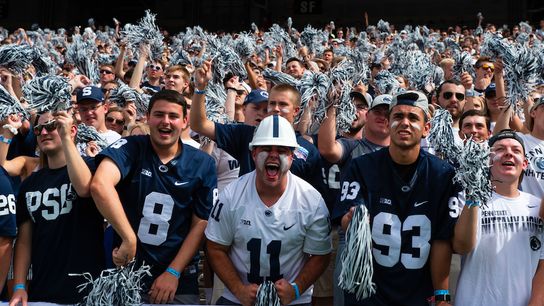(Editor's note: This article has been updated from its original form.)
As you read this, the Big Ten is deep in negotiations with multiple TV networks that will pay the league upwards of $1 billion a year, while also preparing to onboard USC and UCLA in 2024. The conference will stretch coast-to-coast and more closely resemble a professional league than anything we've seen in college football, and in response, the league's players are negotiating with commissioner Kevin Warren for more benefits and a bigger voice in conference matters.
Led by Penn State quarterback Sean Clifford, Big Ten players met with Warren last week to discuss standardizing post-career medical benefits for B1G players, as well as cutting players in on the $1 billion+ the conference is set to generate each year.
"It's been a collective group coming together," Clifford told ESPN on Friday. "Everyone wants players to have more of a voice."
Warren and Clifford have also had separate negotiations Jason Stahl, the founder and executive director of the College Football Players Association.
"The Big Ten Conference consistently communicates and collaborates with our student-athletes," Warren said in a statement. "We are in the process of formalizing a student-athlete advisory committee to seek input from our student-athletes about the changing landscape of college athletics. We continue to work with our member institutions to ensure our student-athletes have an outstanding and well-rounded experience, while promoting and safeguarding the mission of higher education, and prioritizing excellence and integrity in both academics and athletics."
More Perfect Union, a pro-unionization media entity, originally categorized the group as a union push but clarified it is not one at this time.
UPDATE: College Football Players Association leadership clarifies that they aren't organizing as a union but rather an association to represent players' interests. They want to have a united voice in negotiating with the Big Ten. They aren't ruling out unionization down the line.
— More Perfect Union (@MorePerfectUS) July 22, 2022
Penn State quarterback Sean Clifford clarified the group's intentions in this tweet below.
#WeAre pic.twitter.com/TDGBld8awC
— Sean Clifford (@seancliff14) July 22, 2022
As of now, the group's goals are to establish a representative on each campus who can advocate for players to the Big Ten office, similar to how the NFLPA has a player rep on each team; for the Big Ten to set aside funds to cover medical expenses for former players; and for the Big Ten to give a cut of the conference's media rights contracts to players.
In the NFL, players receive 48 percent of football-related income. NBA players receive between 49 and 51 percent.
What Big Ten players earn, if anything, remains to be seen. Clifford said the goal of the negotiations was to collaborate with the league office on a number that works for both sides. Presently, college players receive zero percent of league revenues in straight income.
However, what happens if and when negotiations become contentious, what form this Big Ten group eventually takes, and if it inspires copycat efforts in other conferences, remains to be seen. Stay tuned.
